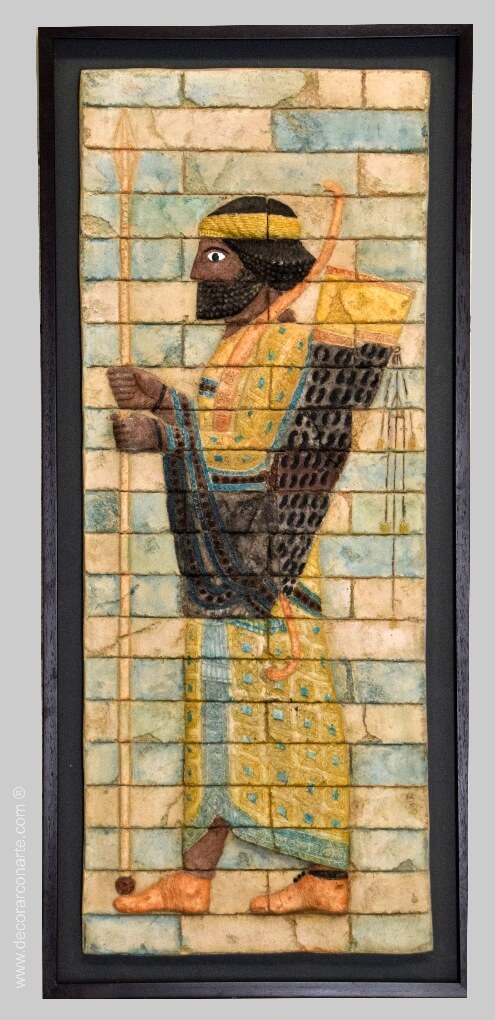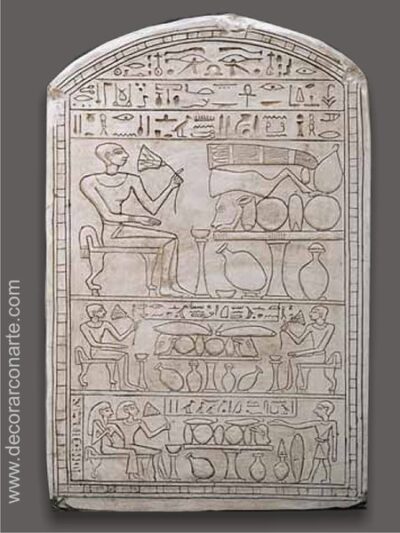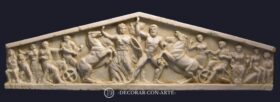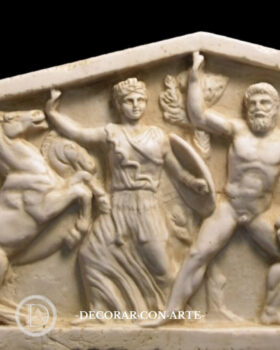Description
Persian Archer Bas-relief (left). Reproduction of a decorative relief made in molded marble (marble powder bonded with resins), polychrome finish, and aging termination made with patinas based on natural earth.
Relief mounted in a wooden frame. The measurements refer to the whole with the frame.
Total measurements of the piece with frame: Height: 121 cm. Width: 54 cm. Depth: 5 cm.
Measurements of the piece without the frame: Height: 110 cm. Width: 43 cm. Depth: 3 cm.
Approx. weight: 21 kg.
Reproductions of sculptures and reliefs, inspired by original pieces from museums, ancient Mesopotamian art. Handmade in Spain. Ideal for interior decoration (living rooms, lobbies, libraries, and offices).
Persian Archer Bas-relief (left). Reliefs inspired by the glazed brick murals from the “Frieze of the Immortals“, found in the throne room of the royal palace of Susa (current Shush, Iran), 5th century B.C. These warrior figures are one of the most popular and widely reproduced themes in the art of the ancient Persian Empire.
The “Frieze of the Immortals” is a mural from the Palace of Susa in which the Persian guard is depicted forming rows in horizontal stripes. The figures of soldiers and archers are depicted in profile with front-facing eyes, following the same pattern as Egyptian and Mesopotamian art. The original mural is made of glazed brick, using dark colors contrasting with bright colors such as red and orange.
The Persian Empire was founded by King Cyrus the Great in the 6th century B.C., becoming one of the most influential civilizations of antiquity. Its vast territory extended from the Mediterranean to the Indus, encompassing unprecedented ethnic and cultural diversity. The Achaemenids implemented a centralized government and efficient administration that favored the management of a vast empire. The Persian Empire was known for its religious and political tolerance, allowing conquered peoples to retain their traditions and religious practices. Alexander the Great’s victory in the 4th century B.C. over the Persians marked the end of the Achaemenid dynasty, giving way to the Hellenistic rule of the Seleucid Empire, until the conquest of Persia by the Parthian king Arsaces in the 3rd century B.C.
















Reviews
There are no reviews yet.